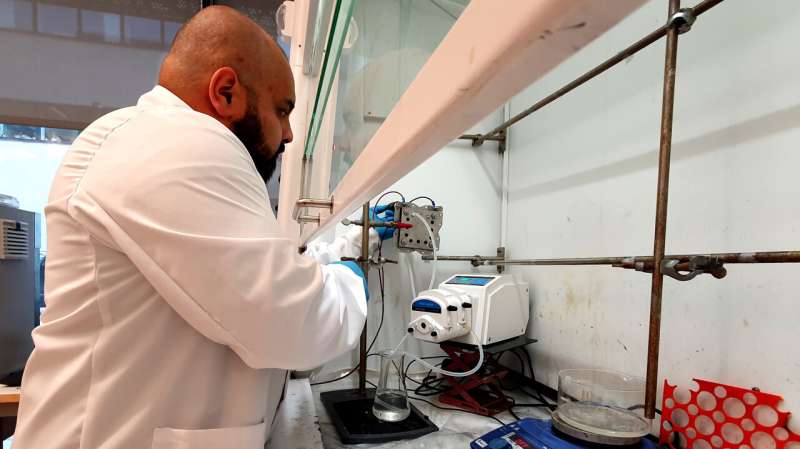In a groundbreaking development, researchers at the KTH Royal Institute of Technology in Sweden have introduced a novel approach to hydrogen production, promising increased efficiency and safety while sidestepping the inherent risks associated with traditional methods.
Published today in Science Advances, the research outlines a pioneering technique that decouples the electrolysis process typically employed to generate hydrogen gas from water, eliminating the potential danger of gas mixing and the need for complex membrane barriers.
Lead by Esteban Toledo, a Ph.D. student at KTH, and Professor Joydeep Dutta, the study presents a paradigm shift in hydrogen production, heralding a new era of simplicity and safety in energy generation.
Unlike conventional electrolysis systems where oxygen and hydrogen are produced simultaneously within the same chamber, the innovative method developed by the KTH researchers separates the gases, mitigating the risk of explosive mixtures and obviating the reliance on rare Earth metals.
Through meticulous experimentation, the team achieved an impressive hydrogen gas Faradaic efficiency of 99 percent, underscoring the effectiveness of their approach. Crucially, long-term tests revealed no discernible degradation of electrodes, bolstering the method’s viability for commercial-scale implementation.
The core innovation lies in the replacement of one electrode with a supercapacitive electrode crafted from carbon. These specialized electrodes possess the unique ability to store and release ions, facilitating the sequential production of hydrogen and oxygen gases.
During the hydrogen production phase, the supercapacitor electrode captures energy-rich hydroxide ions (OH) when negatively charged. Upon reversal of the electric current, the stored OH ions are released, triggering oxygen production at the now-positive electrode. This elegant mechanism ensures the complete segregation of gases, enhancing safety and reliability.
Crucially, the revamped electrolysis process holds immense potential for integration with renewable energy sources, such as solar or wind power, due to its inherent flexibility. By decoupling gas production and eliminating the risk of gas mixing, the system can seamlessly accommodate fluctuating input power levels, heralding a new era of synergy between renewable energy and hydrogen production.
“Toledo explains, “Since we don’t risk mixing the gases, we can operate over a wider range of input power,” he says. “It’s much easier then to couple with renewable energies that generally provide variable power.”
As the world seeks sustainable solutions to meet its energy needs, the KTH research represents a significant stride towards realizing a cleaner, safer future powered by hydrogen—a key enabler of the transition to a carbon-neutral economy. With further refinement and scaling, this innovative method holds the promise of revolutionizing hydrogen production on a global scale.
